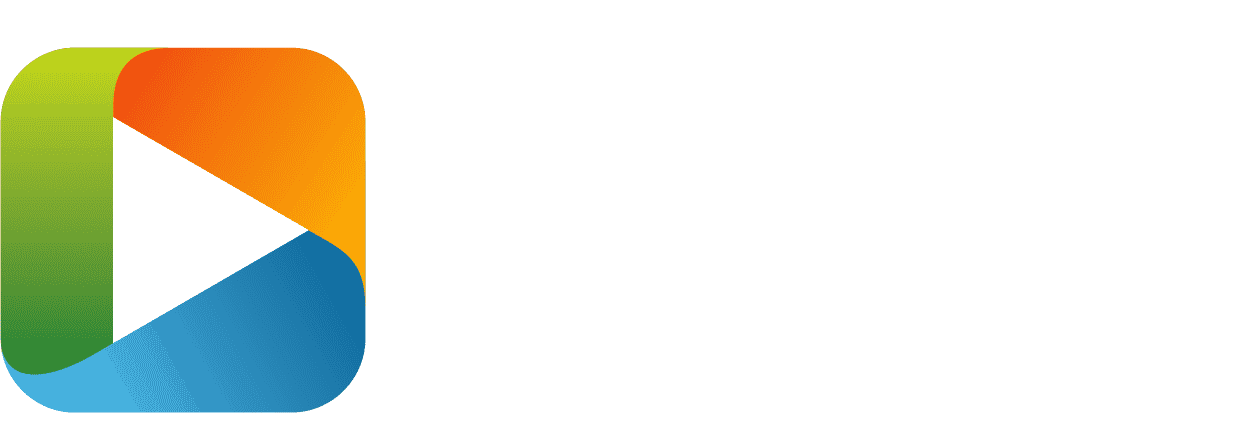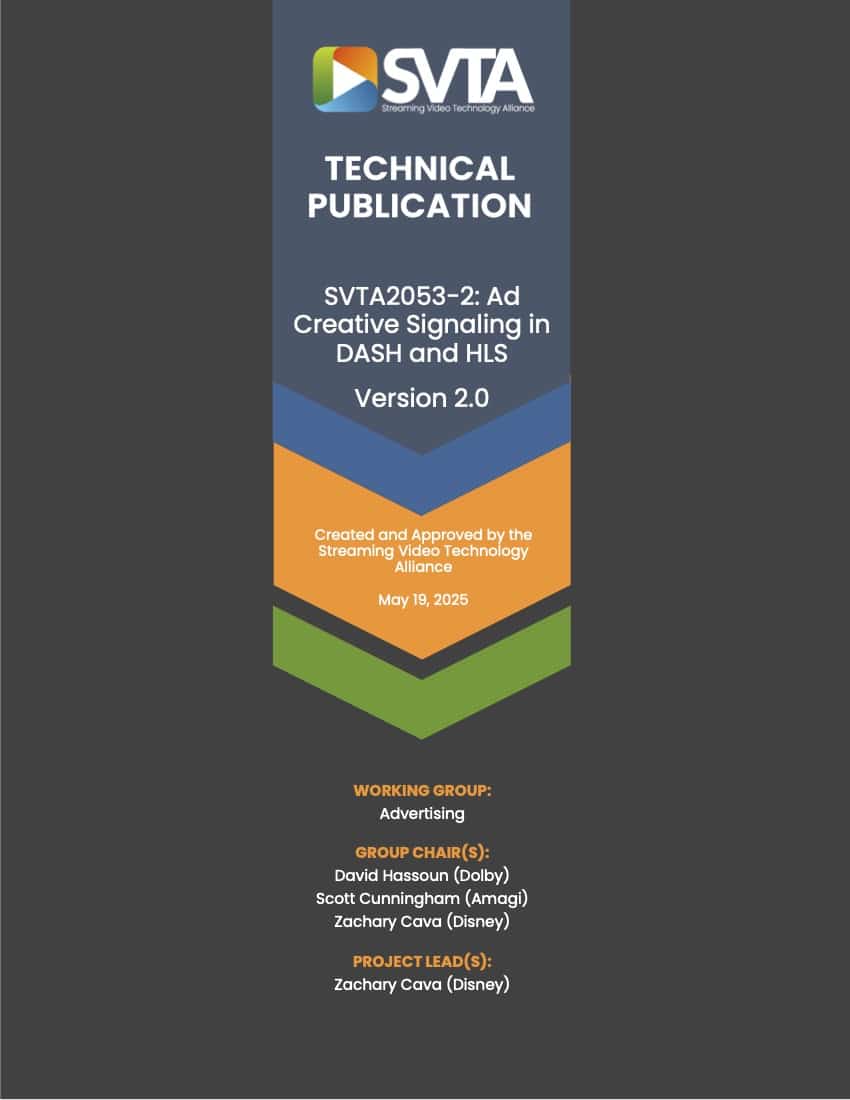Ad Creative Signaling in DASH and HLS Version 2.0
- Home
- Ad Creative Signaling in DASH and HLS Version 2.0
Problem Statement
The first edition of the Ad Creative Signaling in DASH and HLS specification focused solely on the providing of advertisement identifiers within a DASH manifest or HLS playlist. This second edition fully expands the scope of the signaling to bring in all details necessary to enable ad tracking for SSAI and SGAI powered streams without secondary information sources.
Project Description
With the release of the first edition of the Ad Creative Signaling in DASH and HLS, there were questions submitted from industry members asking what further information could be signaled alongside the basic identifiers and if enough information could be carried to fully enable ad presentation and tracking through this signaling alone. After informally surveying interest from SVTA members and industry subject matter experts, the Advertising working group determined there was enough desire and benefit to explore further expansion of the signaling scheme.
Looking at the advertising landscape, the industry has commonly converged around VAST as the ad response communication format. This is a great standard for server-to-server communication and has many mechanisms for describing a wide variety of use-cases, but as it has continued to expand the usage and complexity has grown. Similarly, a common practice was to resolve VAST responses directly on the client with Client-Side Ad Insertion implementations and as implementations transitioned to Server-Side Ad Insertion solutions, no standard in communication was established leading to a large variability in implementation. Looking forward to the industry adoption of Server-Guided Ad Insertion, there is yet another chance for the industry to further fracture and bring greater complexity to the carriage and usage of ad response metadata across streaming formats.
To avoid further fragmentation of industry implementation and promote simplification and interoperability of components within the advertising ecosystem, the establishment of a formal manifest driven ad metadata signaling specification was deemed appropriate and a logical expansion of the original Ad Creative Signaling in DASH and HLS specification. This expansion will look to provide a simplified mapping of VAST to manifest based signaling to enable the removal of VAST awareness from clients and a comprehensive description of carriage for both SSAI and SGAI enablements across HLS and DASH enabling streaming component interoperability.
Project Type
Document
Project Leads
Advisors
There are no SMEs associated with this project.
Published Documents
SVTA2053-2: Ad Creative Signaling in DASH and HLS Version 2.0
The first edition of the Ad Creative Signaling in DASH and HLS specification focused solely on the providing of advertisement identifiers within a DASH manifest or HLS playlist. This second edition fully expands the scope of the signaling to bring in all details necessary to enable ad tracking for SSAI and SGAI powered streams without secondary information sources.
Goals and Objectives
- Establish a basic object model for describing an ad decisioning response
- Define how to source object model data from VAST responses
- Define carriage of the object model in DASH and HLS signaling mechanisms
- Provide a mechanism for partial remote resolution of sub-components of the object model to enable scale / data freshness
Project Scope
This project WILL:
- Establish a basic object model to describe an ad decisioning response
- Inherit terminology and definitions from the VAST specification where appropriate
- Define a binding of the existing VAST structures to the basic object model
- Provide carriage definition of the object model in manifest based structures
- Ensure information consistency between SSAI and SGAI insertion mechanisms while leveraging interaction patterns optimized in each flow type
- Replace the VAST specification
- Define interoperability or conversion between HLS and DASH structures
Contributors
The following members have contributed to this project. Click on their name to visit their profile. If they have not published their profile, the link will redirect to their LinkedIn profile.
Presentations
The following presentations delivered during Advertising working group sessions may provide additional information about this project.












